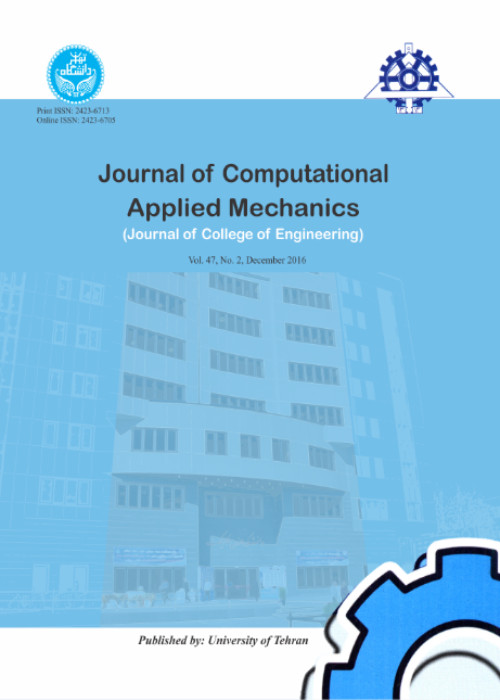Effects of Joule heating and viscous dissipation on Casson nanofluid flow over a stretched sheet with chemical reaction
Author(s):
Article Type:
Research/Original Article (دارای رتبه معتبر)
Abstract:
Nanofluids find numerous applications in thermal engineering and industrial processes due to their effective thermal conductivity property compared to regular fluids. A nanofluid consists of containing nanometer-sized particles, called nanoparticles of metals, oxides, carbides, or carbon nanotubes etc. with water, ethylene glycol, and oil etc. serve as base fluids. The present study takes care of effects of Brownian motion and thermophoresis on unsteady Casson fluid flow, heat and mass transfer over a stretching sheet embedded in a porous medium. Moreover, the flow phenomena are subjected to heat source, thermal radiation, viscous dissipation, Joule heating and are associated with the diffusion of chemically reactive nanoparticles to base fluid. These two thermo mechanical aspects draw a little attention of the researchers as reported in literature. The governing equations of flow model admit similarity solution and are reduce to non-linear ordinary differential equations (ODEs) applying suitable similarity transformation and are solved numerically using Runge-Kutta-Fehlberg method with MATLAB code. The interesting outcomes are recorded as follows: The formation of inverted boundary layer, the consequence of flow reversal, is due to overpowering of shearing effect of the rigid bounding surface over the free stream stretching in the absence of suction. The higher magnetic field intensity as well as unsteady flow parameter leads to increasing skin friction coefficient may lead to flow reversal. Hence, regulating these parameters is a suggesting measure. The low Brownian motion in conjunction with high thermophoresis leads to upsurge of thermal energy (hike in temperature profile) near the bounding surface. The presence of nanoparticles considered in the base fluid, deduces the shearing stress at the plate surface is a desired outcome to avoid flow reversal.
Keywords:
Language:
English
Published:
Journal of Computational Applied Mechanics, Volume:53 Issue: 4, Dec 2022
Pages:
478 to 493
magiran.com/p2556538
دانلود و مطالعه متن این مقاله با یکی از روشهای زیر امکان پذیر است:
اشتراک شخصی
با عضویت و پرداخت آنلاین حق اشتراک یکساله به مبلغ 1,390,000ريال میتوانید 70 عنوان مطلب دانلود کنید!
اشتراک سازمانی
به کتابخانه دانشگاه یا محل کار خود پیشنهاد کنید تا اشتراک سازمانی این پایگاه را برای دسترسی نامحدود همه کاربران به متن مطالب تهیه نمایند!
توجه!
- حق عضویت دریافتی صرف حمایت از نشریات عضو و نگهداری، تکمیل و توسعه مگیران میشود.
- پرداخت حق اشتراک و دانلود مقالات اجازه بازنشر آن در سایر رسانههای چاپی و دیجیتال را به کاربر نمیدهد.
In order to view content subscription is required
Personal subscription
Subscribe magiran.com for 70 € euros via PayPal and download 70 articles during a year.
Organization subscription
Please contact us to subscribe your university or library for unlimited access!


